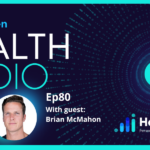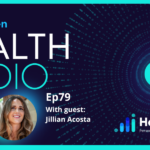There’s an estimated 100,000 apps for health out there. Think about that. 100,000 ways to track your weight, nutrition, training progress, blood sugar, blood pressure — you name it, it’s probably available. So, whether you’re an iPhone or Android user, you likely have a health app or two on your device.
If you’re trying to wade through all the choices, let’s start with the basics: Tracking steps and calories burned is one of the easiest ways to get started with monitoring your healthcare analytics. Here’s why:
- The data is incredibly easy to collect.
- The health benefits of meeting daily goals for physical activity are numerous.
- Tracking steps is a gateway analytic that can lead to helping you understand other important numbers like your weight, BMI, body fat percentage, blood sugar and more.
We designed Heads Up Health to integrate a pretty long list of activity trackers so you can track activity with all your other health metrics. Can more activity lower your fasting blood sugar? Improve your sleep? Shrink your waist circumference?
Weight management
Apps for health can produce some impressive — and noticeable — results, especially when it comes to weight management. Say you’ve hit the ripe old age of 30. You’re cruising along: long commutes in the car, working hard at your job, but with your desk job, you’re putting on the pounds, little by little.
Those pounds are creeping on because you’re not active enough. You might feel like you’re active enough, but chances are you’re walking and running around way less now than you were a few years ago, mostly because you’re putting in 40+ hours at a desk.
If you use an app for health or activity device, you can start collecting the data on how much you’re moving. The simple act of having real data on your steps per day can be incredibly helpful for changing your behavior. Only hitting 5,000 steps instead of the recommended 10,000 steps per day? Well, that’s easy enough to fix. Simple things like parking a little further away can be a way to hit your daily step goal and quantify your success each day.
Once you start collecting your activity, you’ll also be able to collect the calories you’re burning each day. And with that, you’ll be able to see some patterns with other information such as weight, body fat and BMI. If you’re not averaging at least 10,000 steps per day, don’t expect any miracles on the scale!
Disease prevention
Beyond weight management, tracking your activity and calories that you burn can help prevent disease — keeping you out of the hospital and feeling good so you can keep up with your busy life. Unfortunately, long commutes, desk jobs and evenings in front of the TV have led to a society where we now spend more time sitting than we do sleeping. One study estimated that between sleeping and sitting, we’re sedentary for 21 hours a day on average!
Excessive sitting time puts our bodies into a metabolically dysfunctional state. In fact, medical professionals are now referring to “sitting” as the new “smoking” due to the increased risk of metabolic and cardiovascular disease from too much sitting.
So, track your activity. Notice when you’re sitting too much. Get your steps in. And help decrease your risk of some pretty horrific diseases in the long run.
Mental health
The phrase “Exercise: Cheaper than therapy” has some truth behind it. Physical activity effectively manages and even improves your state of mind. Walking and running are great for lowering stress, staying productive at work and maintaining an overall sense of wellbeing. Getting up for short walks throughout the day and chipping away at your daily activity goal can do wonders for your mental health. “When in doubt, sweat it out!”
Track your steps, improve your health. It’s that easy. If you’re interested in seeing how your activity impacts your other healthcare analytics — BMI, weight, blood pressure, cholesterol, Hemoglobin A1c and more – make sure you have a Heads Up Health account so you can see the big picture when it comes to your health.



















